Benign Breast Disease
Article Sections
Introduction
Benign breast masses are common noncancerous lumps or growths in breast tissue. The most frequently encountered benign breast masses include simple breast cysts, galactoceles, fibroadenomas, lipomas, fat necroses, and fibrocystic breast disease. The goal of evaluation is to distinguish benign causes from malignancy. The initial evaluation of a breast mass includes history (with attention to risk factors for cancer), clinical breast examination, and age-based imaging (Figure 1):
- Age <30: Breast ultrasonography is usually first-line imaging because younger patients tend to have a higher breast density (limiting visualization of some masses on mammography) and a lower risk for malignancy.
- Age 30-40: Either mammography or breast ultrasonography may be first-line depending on patient factors and suspected diagnosis. Often, both are performed because the studies are complementary.
Continue Learning with UWorld
Get the full Benign Breast Disease article plus rich visuals, real-world cases, and in-depth insights from medical experts, all available through the UWorld Medical Library.
Figures
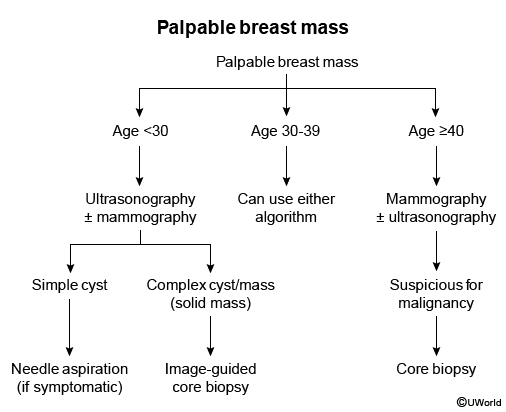
Figure 1
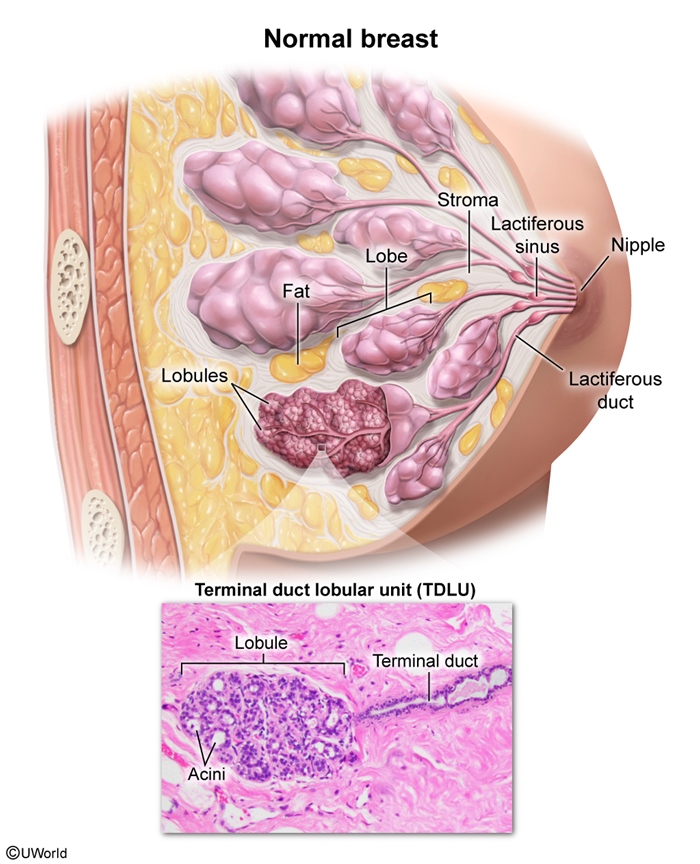
Figure 2
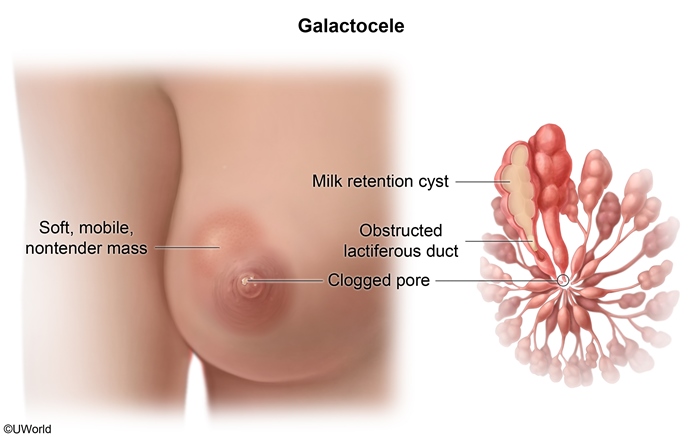
Figure 3
Images
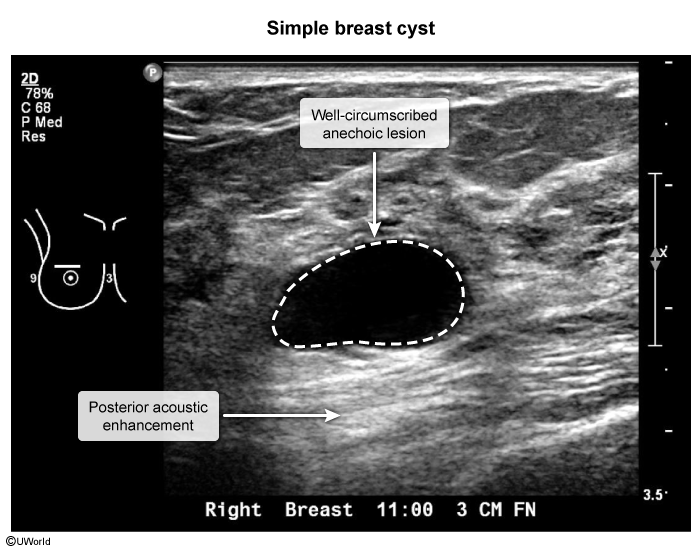
Image 1
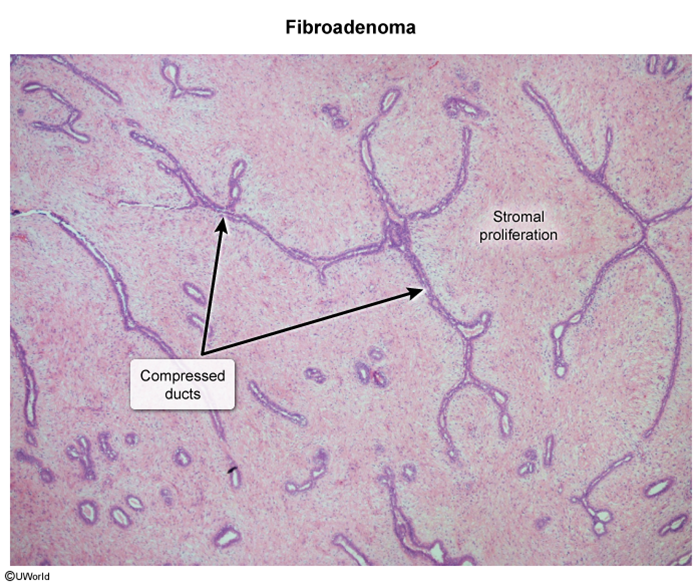
Image 2
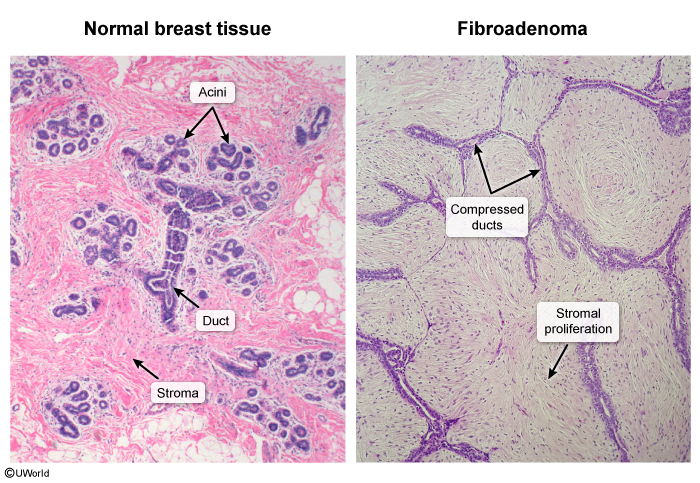
Image 3